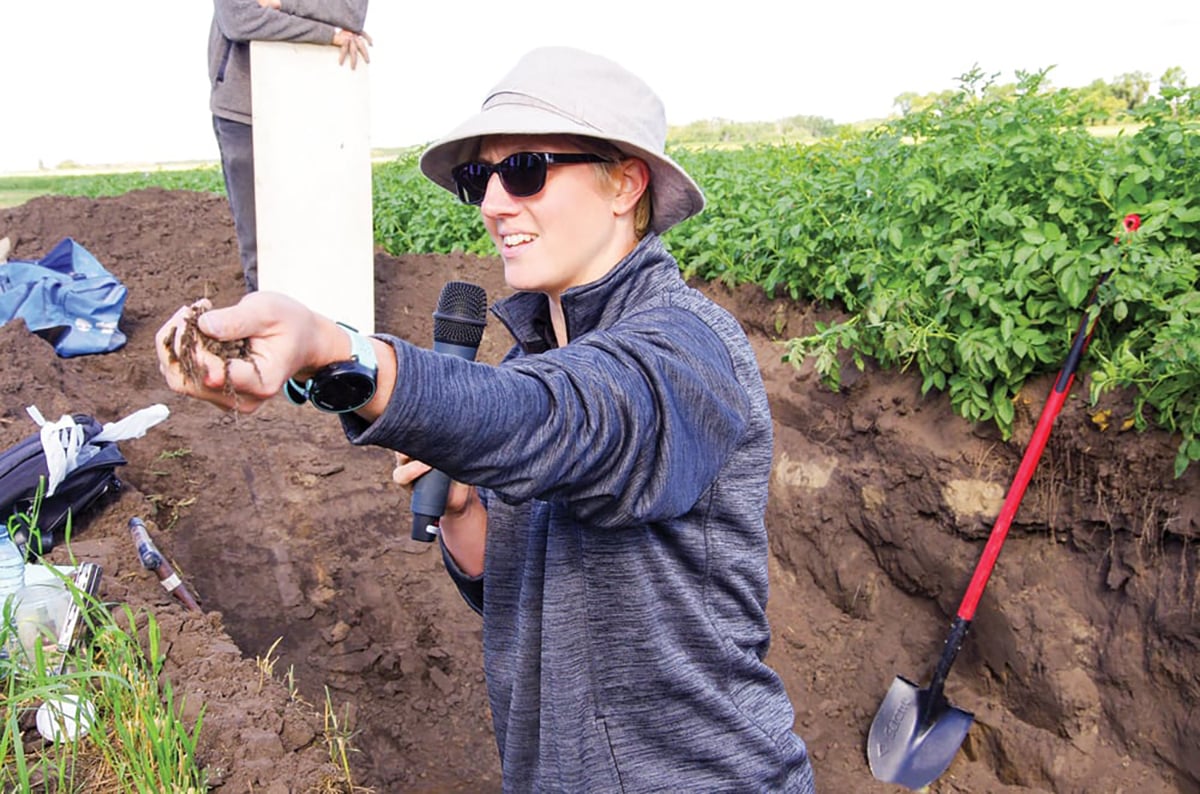FARGO, N.D. – When a pothole or slough can’t be ditch drained, it’s time to hook up the pump.
The Dyna-Flo Flood Pump is the newest drainage pump on the North American market.
Dyna-Flo designers set out to build the simplest pump with the longest working life possible.
Manufactured by General Irrigation & Dewatering in Oaks, North Dakota, the pump is capable of pumping 3,000 US gallons per minute to a head of 15 feet using only 20 horsepower.
Read Also

Fall soil testing tips for smart fertilizer plans
Quality crops next year start with quality soil test data, which starts with Manitoba farmers using the best possible soil sampling practices in fall 2025
The Dyna-Flo is a tractor-powered pump that the operator backs in as far as he dares without getting stuck. It has a hinged hitch so the 21 foot long intake pipe can safely back over embankments with the power take-off connected.
“We run the power shaft down the middle, inside the pipe that handles the water,” said company owner and president Dana Rosendahl.
“There are no ball bearings or roller bearings inside the water pipe. The shaft runs in water bearings only.”
Pipe diameter is 12 inches, and three access plates on the side of the pipe allow bushings to be checked.
The brass water bushings are similar to those on boats, ships and deep-water wells. The power shaft is encased in a stainless steel sleeve at each bearing point. The stainless steel rides in contact with the brass bushing, and flowing water provides the lubrication, thus the name water bearing.
“We borrowed the technology from deep-well water turbines. They run a bearing setup like that for every 10 feet of shaft. It’s all totally water lubricated.
“In the deep water wells, these sleeve bushings often last 20 years, so it’s unlikely they’ll fail in farm use.”
However, a pump that’s draining a prairie pothole can also suck up sand, silt, cattails, bulrushes and animals, which can cause considerable damage to a bearing surface.
“We run something called a sand collar to keep sand and silt out of the bearings. Water is an excellent lubricant, but it must be clean,” Rosendahl said.
The sand collar fits tightly on the stainless steel bushing at the end from which the pressurized water comes. It diverts gritty contaminants around the bushing, yet allows water to get in.
“The only ball bearing in our whole pump assembly is at the impeller. It’s the thrust bearing. When the impeller is pushing water up the pipe, it’s also pulling the impeller down into the water. This bearing takes the bulk of that load.”
For this end of the pipe, Rosendahl found a greasable bearing installed in a brass case, made specifically for use in water.
The input end of the pipe has a hefty cage to prevent large items from entering the pipe. A shaft key will break to prevent further damage if a log or rotten fence post gets through the cage.
“The bearing costs $300, but it’s engineered for this kind of work. It’s probably the most expensive single item on the whole pump assembly.”
To push the water, Rosendahl uses a straight propeller, located just inside the bottom end of the pipe. There is no auger flighting or other impellers. The single straight propeller does all the work.
He is planning to add a diffuser at the pipe intake to reduce the vortex effect in shallow water.
At the discharge end of the pipe, the power shaft runs through a simple packing box where it connects to the p.t.o. If water does seep through the packing box, it meets a slinger ring, which keeps it from trailing up to the p.t.o. drive.
Although a pressure gauge at the top of the discharge tube allows the operator to fine-tune the power input, Rosendahl said most tractors at an idle will put the pump up to maximum capacity.
Water discharge can go either left or right. Opening both discharge ports will increase the capacity, but Rosendahl said he hasn’t run tests on that yet. Wheels and hubs are the same as those used on boat trailers, with zerks on the caps so they can be quickly greased.
The Dyna-Flo carries a list price of $7,500 US. Each hose costs $750.
For more information, contact Dana Rosendahl at 701-742-3223 or visit www.generalirrigation.com.















